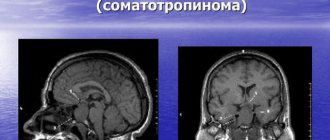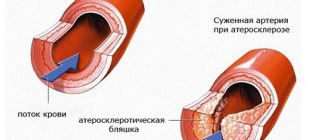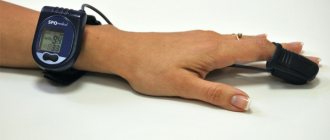Definition of migraine headache
Psychosomatics is a set of psychological factors that influence the occurrence and course of a somatic disease. Migraine is a neurological disease that manifests itself as periodic attacks of headache lasting 2-72 hours. The clinical picture includes signs:
- Cephalgia in one side of the head.
- Moderate to high intensity of pain.
- Nausea, vomiting.
- Increased sensitivity to sound and light stimuli.
- Visual dysfunction.
Cephalgic syndrome intensifies with physical or mental fatigue. An aura is often a warning sign of an attack. Migraine is the second most common cephalalgia, second only to tension pain. Pathology is detected in 12-15% of the population. The onset of the disease is typical at a young age (up to 20 years). The peak incidence occurs between 25 and 34 years. Many factors are involved in the pathogenesis of migraine:
- Decreased serotonin levels.
- Vascular pathologies and related blood flow disorders.
- Cerebrovascular disorders.
- Violation of neurohumoral regulation and associated pathological dilatation of blood vessels.
Scientists call psychological disorders one of the factors in the development of pathology. Some emotions, such as fear, joy, anger, sadness, can influence the physiological processes occurring in the body. The listed emotions are associated with changes in heart rate, frequency and depth of breathing, and activity of the gastrointestinal tract.
Under the influence of the emotional background, the production of hormones changes, transformations occur in the muscular system (increased or decreased muscle tone) and the skin (hyperemia). The sympathetic nervous system is responsible for the body's response to stress, strong feelings or extreme situations.
According to the American psychologist L. Hay, the psychosomatics of migraine consists of the influence of experienced negative emotions and a destructive way of thinking. The author explains the relationship between negative emotions and diseases by internal psychological attitudes that cause disruptions in the functioning of the autonomic nervous system.
How to get rid of migraine?
Renowned psychologist Louise Hay spent many years closely observing patients suffering from chronic migraines.
She analyzed the causes of recurring attacks and identified their connection with mental factors and stressful experiences. In her books, she suggested that patients with the following characteristics are most susceptible to the disease:
- overwhelming emotions and feelings;
- having feelings of guilt towards loved ones;
- suffering from unfulfilled desires.
Connecting the causes of migraines and psychosomatics, Louise Hay points out frequent attacks in people who are forced into relationships. The condition is worsened by working in a conflict team, suppressing anger or malice.
Philosopher Liz Burbo agrees with the American psychologist. Actively considering the manifestation of migraine and the psychosomatics of the disease, she traced the connection between the state of stress and exacerbation. Among the common causes of vascular pathology:
- phobias;
- prolonged depression;
- constant feeling of anxiety;
- lack of fulfillment in personal life and professional sphere.
According to the theory of Liz Burbo, the psychosomatics of migraine lies in the constant accumulation of negativity. It begins to put pressure from the inside, causing increased blood pressure, swelling and headaches.
The more depressed a person is, the more often attacks occur, and the disease becomes chronic. The situation explains the appearance of migraines in middle-aged men.
According to the psychosomatics of migraine, pain in the temporal region is more common in women who are perfectionists.
They set high goals for themselves and are constantly under pressure. Not getting the desired result, they engage in self-flagellation, which increases the state of stress.
If the causes of the disease are associated with the manifestation of psychosomatics, the body does not respond to treatment with pills.
The attacks become more frequent, the person loses ability to work, and avoids visiting noisy places. Drug treatment produces virtually no results, only temporarily reducing the severity of spasms.
If a chronic form of migraine is diagnosed and the cause lies in psychosomatics, psychologist Valery Sinelnikov recommends starting with internal balance:
- love yourself, stop looking for flaws in appearance and character;
- accept loved ones with all their imperfections and flaws;
- surround yourself with positive emotions and cheerful people;
- find an interesting hobby;
- learn to manage anger, anger.
The psychosomatics of migraine in women is often associated with personal problems that stem from actions in youth. Therefore, it is better to trust a psychotherapist or psychologist. It will help you free yourself from painful thoughts and restore peace of mind.
Exercise helps relieve stress and improve well-being. Doctors recommend paying attention to swimming, yoga and dancing, and jogging in the park more often.
As a preventive measure for stress, you can use aromatherapy, migraine treatment with herbs or acupuncture.
Next time we’ll talk in detail about massage for migraines.
GET WELL
The psychosomatics of migraine in men and women correlates with such emotional states as worries, fears, and internal attitudes. Stress is considered one of the main negative factors in the development of cephalgic syndrome. The following factors play a role in the pathogenetic mechanism: vascular pathologies, disruption of the processes of natural regulation of the tone of the vascular wall. The main psychological reasons for the development of migraine:
- Internal conflict. Contradictions that arise as a result of the confrontation between two points of view. For example, an alcoholic understands that his habit is harmful, but is unable to give it up, looks for excuses and returns to drinking alcohol.
- Motivation, relative benefit. Relatives and friends treat a sick person with great attention and care, which can provoke a desire to get sick. Another option is the desire to get sick in order not to go to work, to avoid an unpleasant meeting or to fulfill assigned duties.
- Third party suggestion. The psychological impact on a sensitive person can provoke a headache attack.
- Imitation of the behavior of an idol, an ideal. Teenagers often copy the behavior of adults. If parents in a family regularly complain of migraine attacks, this can provoke cephalgic syndrome of psychosomatic etiology in children.
Psychological reasons have a physiological basis. In a state of strong nervous excitement, stress, aggression, the speed of blood circulation in the head area increases, which helps to increase blood flow. The “fight or flight” response is formed when the body prepares for an extreme situation.
This releases additional glucose to provide an energy resource for future physiological processes. The heart rate accelerates, the breathing rate increases, and the muscles tense. The hormone adrenaline, which is intensively produced when a person is angry, afraid or very excited, is responsible for such transformations.
Adrenaline dilates blood vessels in the brain. After suppressing anger and aggression, the parasympathetic nervous system restores the normal functioning of internal organs. The muscles relax and blood flow to the head increases, which presumably leads to a headache.
Physiologically, the body has prepared to “throw out” anger into the external environment. But by suppressing aggression, the individual blocks physiological discharge, which provokes disruptions in the natural control, self-regulation of the circulatory system of the brain and the subsequent development of cephalgic syndrome.
Space for healing life. Personal website of Elena Barymova
Everyone knows such diseases as gastritis, ulcers, migraines, allergies, rheumatoid arthritis, bronchial asthma and hypertension. All of them belong to the so-called “psychosomatic” diseases and are closely related to internal conflicts, which are based on unconscious causes. Drug treatment of such diseases often has only a short-term effect, after which the disease returns again. Therefore, it is so important to understand the reasons behind these diseases in order to help yourself cope with them.
Psychosomatics
(ancient Greek psycho - soul and soma - body) - a direction in psychology and medicine that studies the influence of psychological factors on the occurrence and course of somatic (bodily) diseases ny.
Within the framework of psychosomatics, connections between personality characteristics (constitutional features, character traits, behavioral styles, types of emotional conflicts) and one or another type of behavior are studied. Czech disease.
In this article I would like to look at migraine and the reasons associated with its occurrence
.
Migraine has been described since ancient times. Among the great people, Julius Caesar, Napoleon, Macedonian, Dostoevsky, Kafka and Virginia Wolfe suffered from migraines. An almost “unbearable” headache can last from several hours to several days.
Let's look at the basic definition of this psychosomatic illness. Migraine (Greek hemicranias - half of the skull) manifests itself in the form of attacks of severe, almost paralyzing headache, usually in one half of the head. It is believed that the disease is inherited through the female line and manifests itself with the onset of menstruation. An attack is often preceded by a characteristic sensation for the patient, called aura (Latin: wind blowing).
The attack may be accompanied by
:
- dizziness;
- nausea;
- visual impairment;
- vomit;
- increased sensitivity to light and sounds.
In some cases, people see sparkling dots, balls, zigzags, lightning, fiery figures. Sometimes all objects seem enlarged or reduced (Alice syndrome). The pain can be pulsating or boring and is intensified by light and noise, and increases with exercise and walking. The patient strives to unite in a dark room, close his head in bed.
Migraine and the psychosomatic causes of its occurrence have been actively studied in psychoanalysis. The foundations of the psychoanalytic approach to studying the causes of migraines were laid by S. Freud, who himself suffered from migraines for most of his life. Rich personal experience served as the basis for the creation of a psychoanalytic theory of pain. B. Luban-Plozza and co-authors note that migraine serves to “hide mental conflicts.” A migraine attack can provide the patient with elements of secondary pleasure: it gives the opportunity to manipulate the family or punish the world around them.
Some authors have described a personality type prone to migraines
. It turned out that such patients are characterized by lagging emotional development and advanced intellectual development. They are characterized by ambition, restraint, a sense of self-worth, sensitivity, dominance and lack of a sense of humor. Migraines often appear at the moment when the patient leaves the parental wing and begins to live independently. Another study identified character traits of these patients: obsessiveness, perfectionism, excessive competition, inability to shift responsibility.
F. Alexander believed that the basis of migraines is suppressed aggression towards others and relatives. In a state of affect, the blood supply to the brain remains abundant and even increases. When anger is suppressed, muscle activity is blocked, blood flow to the muscles is weakened, and blood flow to the head becomes even stronger. This may be the physiological basis of migraine attacks. That is, at the physiological level, the body is preparing to show aggression, but the individual blocks it, and no physiological release occurs. As a result, we have a headache.
Modern American studies of patients with migraines have revealed a significant connection between migraines and other diseases. People suffering from migraines are more prone than others to depression, increased anxiety and thoughts of suicide. This connection may also be explained by the quality of life of such patients. Attacks of migraines, lasting from several hours to several days, often force patients to miss work and activities that are important to them.
It is quite difficult to understand on your own the causes of migraines and other psychosomatic diseases
. Psychotherapy can help here. Particularly effective, in my opinion, is working on your own problems in a psychotherapeutic group created specifically for people suffering from psychosomatic illnesses. In this kind of group, participants can try together to understand the causes of their illnesses, get support and exchange experiences.
I would like to end this article with a quote from Marcel Proust: “ When suffering gives way to reflection, it ceases to torment our hearts with the same force.”
«.
Symptoms
If a migraine is provoked by psychosomatics, the headache occurs as a result of vasodilation, which in turn is caused by strong emotions (anger, fear, malice). Main features:
- The appearance of precursors in the form of weakness, difficulty when trying to concentrate.
- At the initial stage, the pain is localized in the temporal and occipital region, gradually covering one half of the head.
- The painful sensations are pulsating, pressing in nature.
- Increased cephalalgia after physical activity.
Researchers have found that migraine, the pathogenesis of which is psychosomatic, is interconnected with other diseases of the central nervous system. Patients have an increased tendency to develop neuroses, depression, and suicidal tendencies.
According to research by psychologists, people prone to migraine attacks are more likely to have extraordinary intellectual and creative abilities. Psychological analysis of patients who regularly suffer from migraine attacks shows:
- Increased level of anxiety.
- Moderate depression.
- High concentration.
By the time the attack begins, the level of anxiety and depression increases, and the attention function weakens. Patients often experience asthenia - exhaustion of the body, increased fatigue. In 70% of patients, character traits such as sensitivity, vulnerability, developed self-control, and an internal ban on public expression of feelings were revealed.
- Committed, dutiful, neat, conscientious.
- Strives for success, achievements, implementation of plans.
- An intellectual with an underdeveloped emotional sphere.
The conclusions of psychologists boil down to the fact that migraines more often develop in gifted, purposeful people who dream of their own perfection and accumulate irritation against the backdrop of their inability to timely throw out and neutralize negative emotions. They are characterized by excessive ambitions, a dull sense of humor, and a desire to dominate.
Causes of heartburn of psychosomatic origin
There are two main causes of psychosomatic heartburn:
- Fear.
- Stress.
Both states are inseparable from each other, and with the appearance of one, the second soon follows. By its nature, heartburn appears due to the release of gastric juice into the esophagus, which has an extremely aggressive effect on the unprotected mucosa. The organs are separated by a sphincter, which prevents the release of acid in the normal state, but problems with the nervous system cause it to relax, which ultimately causes a strong burning sensation in the chest and throat.
Treatment
A psychotherapist will help you cope with migraines caused by psychosomatics. To reduce the influence of psychosomatic factors in the development of headaches, you must adhere to the following recommendations:
- Autotraining, psychotraining.
- Therapeutic relaxing gymnastics.
- Sports activities.
To prevent the influence of psychosomatics on the development of migraines in women and men, it is important to change consciousness, tune in to a positive way of thinking, avoid negative emotions or give vent to surging feelings. Psychologist Louise Hay offers people with migraine attacks caused by psychosomatics effective methods of self-healing. Basic principles of the methodology:
- Reduce the number of demands on yourself.
- Accept your imperfection and the imperfection of the world.
- Recognize the state of nervous overstrain and exhaustion.
- Surround yourself with positive people and preferably communicate with them.
- Stop the formation and cultivation of negative emotions.
She advises focusing on feelings such as love and forgiveness, getting rid of fears, and taking care of physical and mental health. You need to love, accept yourself with all your real and imagined shortcomings, quickly forget the insults accidentally or intentionally inflicted by loved ones. A positive attitude will help you cope with any illness.
It is worth considering the possible influence of psychosomatic factors on the development of migraine attacks in people suffering from regular migraine attacks. A comprehensive treatment program for patients whose psychotype is predisposed to such influence includes methods of psychotherapeutic correction.
- Stomach psychosomatics Liz Burbo
- Causes of migraine: disorder in the KCNK18 gene, stress, alcohol
Getting rid of the old to make room for the new
Below, in this article, you will see a list of diseases, their causes and affirmations compiled by Louise Hay that will help get rid of the disease.
But I believe that it is not enough to just start saying affirmations. It is also necessary to identify and eliminate all our negative attitudes that create a reality that is unnecessary for us.
These are the same “weeds” that Louise Hay spoke about.
After all, if you start pronouncing new affirmations, the old attitudes will not go away. Do you agree? First, you need to get rid of them. Then the effect of affirmations will be 100%.
I wrote about how to identify all your blocks, negative attitudes and replace them with new positive thoughts in the article Negative attitudes: how to identify everything at once and remove them forever?
Another “toxic” emotion that kills us from the inside, that prevents us from fulfilling our desires, that destroys our health is resentment.
Someone offended you, disappointed you, or you are in a quarrel with someone, all this leaves a residue inside you that destroys your positive attitude. You need to get rid of resentment.
- How to forgive offenses and raise your vibrations so that difficult desires come true - forgiveness meditation.
- Ho'oponopono method: getting rid of negative situations and cleansing the subconscious.











